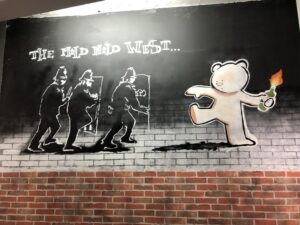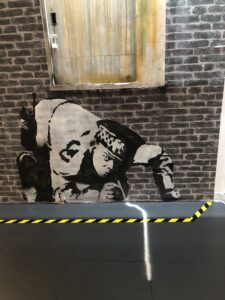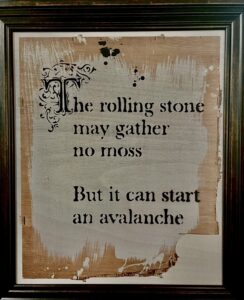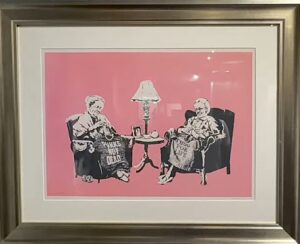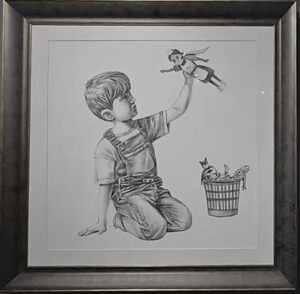♥Introduction♥
I had the pleasure of attending Macaulay Honors College’s annual Night at the Museum event at the Brooklyn Museum. As a class, we focused on floors 3 and 5, which showcased Ancient Egyptian art, Native American art, and African American art. I am both Egyptian and Black, so finding artifacts I can relate to allowed me to learn things about myself and my culture that I did not know before.

♥Hair is Art♥
It is important to note that art is a conversation. You are having your very own discussions that are influenced by the art you see and how you react to it. For me, these exhibits involving hair spoke to me. Growing up, I was always ashamed of my kinky, frizzy, curly hair. I desperately wanted to have straight hair like my friends because their hair seemed “prettier” to everybody else and I did not know how to style my hair. Today, I am not ashamed to go to college with my hair in a protective style, and I am not ashamed to go to events with my curly hair out. Seeing these exhibitions spoke to me because hair that looks like mine is displayed as art in a museum. My hair is art. After feeling like I had ugly hair for so long, I can finally see myself in art as early as 2000 B.C.E.
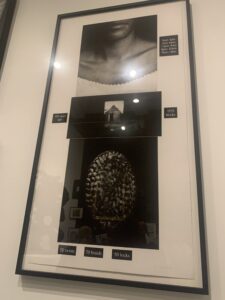
Counting (Laura Simpson, 1991)
To me, this piece showed the beauty of counting. The beauty in aging. The beauty in a house after it’s built. The beauty in braiding hair. But this beauty comes with time, precision, and effort. While my hair takes more time to do than straight hair, the time and effort it takes tells a story about how I care for my hair, which makes it art.

Bound (Kehinde Wiley, 2014)
This statue was created to show that Black women are bound to their hair. Hair harbors connections to history, people, and family. The way we do our hair tells a story about the purpose we do it for. Braids, in this case, are a protective style. Yes, it protects our hair and scalp, but it protects us too. Rice and seeds used to be hidden in African braids to survive the Middle Passage. Braids are also used to identify which tribe or country you are from. These are some perfect examples to show why Black women are bound with hair.

Hairdressing Scene (c. 2008-1957 B.C.E.)
This scene shows me that not only was the presentation of hair important since the beginning of time, but Egyptians used to embrace curly and braided hair. Today, Egypt has become very Eurocentric in terms of beauty standards, so curly hair is straightened, protein and keratin treatments are on the rise, and being curly isn’t considered presentable. My vacation in Egypt was the start of my insecurity with my hair, and I straightened it every day. Representation influences how people view themselves, and it is important to include everybody for this reason. Prior to this museum trip, I did not realize that curly hair was embraced in Ancient Egypt, and it only makes me prouder to wear mine.
♥Conclusion♥
Representation influences how people view themselves, and it is important to include everybody so people are uplifted, knowledgeable, and comforted. In this museum, I felt very included and I walked out of it feeling happy that I could finally look at art and see myself in it. The conversations I’ve had with these exhibits about my hair have healed the part of me that was too worried I’d never find something to relate to, and I now understand the difference between looking at art and seeing it.






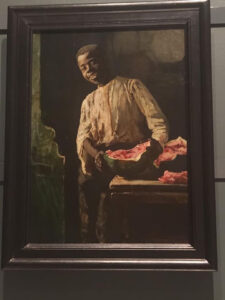



 d” and the other has “Thug For Life” stitched into their blankets. It’s such a great contrast – these sweet old ladies who you’d normally associate with quiet afternoons are sitting there with phrases that scream rebellion and toughness. It’s like Banksy is saying that the spirit of punk and defiance isn’t just for the young. It doesn’t disappear just because you age. This piece made me smile, thinking about how rebellion and resistance to conformity can stick with us, even when society expects us to mellow out.
d” and the other has “Thug For Life” stitched into their blankets. It’s such a great contrast – these sweet old ladies who you’d normally associate with quiet afternoons are sitting there with phrases that scream rebellion and toughness. It’s like Banksy is saying that the spirit of punk and defiance isn’t just for the young. It doesn’t disappear just because you age. This piece made me smile, thinking about how rebellion and resistance to conformity can stick with us, even when society expects us to mellow out.



